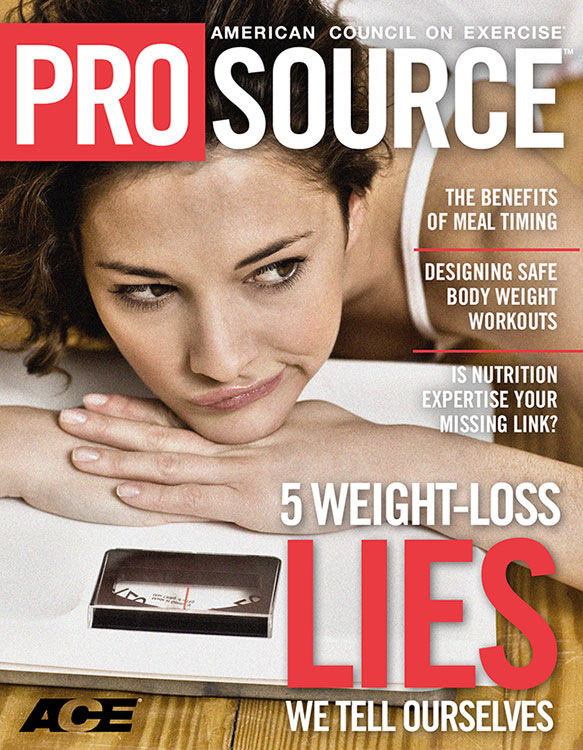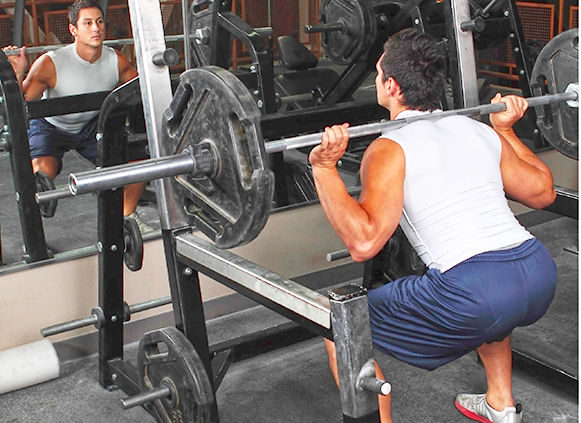
There is no such thing as a bad exercise—only bad application. These words, once spoken by Steven Fleck, have remained in the forefront of the mind of ACE Master Trainer Garret Stangel, M.A. throughout his personal-training career.
“That saying has caused me to look at exercise choices with an analytical eye on both the potential pros and cons,” says Stangel, who is an ACE-certified Personal Trainer and ACSM Health Fitness Specialist based out of Milwaukee, Wis. While proper execution of any movement is of the utmost importance, in a never-ending sea of exercise options—often one more creative than the next—all moves are certainly not created equal. From selectorized equipment that restricts natural range of motion to exercises that fail to provide functional benefits for clients, it’s important that fitness professionals take a closer look at the potential benefits and risks associated with commonly performed exercises, working to identify safer, more effective movement options that best serve each individual client.
Several of the fitness industry’s top personal trainers and movement experts share which exercises they feel should be reconsidered based on an understanding of how the human body is designed to move, and suggest more effective exercise options that ensure client safety remains priority number one.
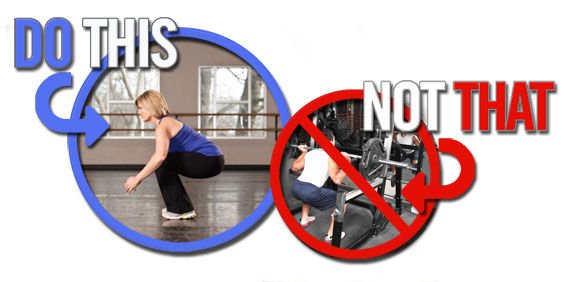
Exercise to Reconsider: Smith Machine Squats
Why: While squats serve as an integral component of any training program, the Smith machine fails to allow for a functionally sound movement to occur, according to Steve Cotter, international fitness presenter and founder and president of the International Kettlebell Fitness Federation. “Not only does the fixed plane of motion decrease the recruitment of important muscles required to maintain a stable core, it also restricts natural range of motion and prevents the hips and spine from properly flexing during the movement,” says Cotter.
More Effective Alternatives: Cotter points out that a functionally sound squat initiates in the hips as clients sit back, allowing the load to be distributed through the body, which reduces shearing forces on the knees. “To focus on proper form and quality of movement, first ensure clients master the body-weight squat, then consider adding load, if appropriate, with exercises like kettlebell goblet squats or barbell back squats to increase strength.”
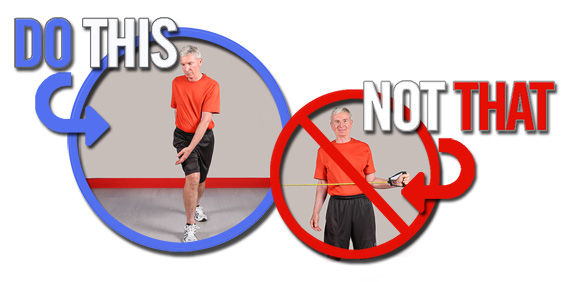
Exercises to Reconsider: Shoulder Internal and External Rotation
Why: From preventing rotator cuff injuries to working with clients post-rehab, rehabilitative exercises once only seen in physical-therapy settings have made their way into the gym, but not everything has its place on the fitness floor. Anthony Carey, M.A., C.S.C.S., CEO and founder of Function First, believes that internal and external rotation of the glenohumeral joint—an exercise most commonly performed either side-lying using a free weight or standing using a cable or tubing—should be limited to the early phases of shoulder rehab and, when carried over into the gym, these movements can be counterproductive to normal shoulder function.
“In both versions of these exercises the elbow is fixed against the torso and the humeral head moves in the glenoid independent of any appreciable scapular movement. Normal upper-extremity movements, in contrast, combine motion of the scapula on the rib cage, the humeral head in the glenoid, the clavicle with the scapula and even subtle motion of the 1st rib,” says Carey, author of The Pain Free Program: A Proven Method to Relieve Back, Neck, Shoulder and Joint Pain. “These motions are often influenced from the hips and pelvis, with a strong correlation between the shoulder on one side of the body and the hip on the opposite side. Locking the shoulder in place removes the opportunity for the synchronization of all of these players in healthy shoulder function.”
More Effective Alternative: Carey recommends having clients perform an anterior lunge with the opposite arm starting up in a throwing position and crossing in front of the knee of the lunging leg. “This movement will promote motion of the scapula on the rib cage, along with motion of the rest of the shoulder girdle, while integrating the contralateral hip. At the same time, the shoulder girdle is being effectively challenged, both eccentrically and concentrically.”
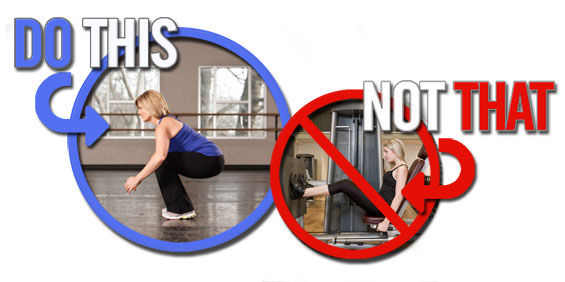
Exercise to Reconsider: Leg Press
Why: For clients focused on muscle hypertrophy, the leg press machine is often a go-to option for building up the quadriceps. However, this machine fails to fully integrate what should be a hip extension—driven movement, says international fitness educator Dan McDonogh.
“The leg press, due to the nature of being confined in the machine, does not allow for the movement of triple flexion/extension at the ankles, knees and hips—and because the hips cannot go into full extension as the weight is pressed up (because the hips are essentially locked into the back pad and seat), little-to-no glute activation happens at the top of the movement,” adds McDonogh, who oversees Group Training and Development for TRX.
More Effective Alternative: For a more functional move that focuses on joint stability and mobility along with core-integrated movement, McDonogh recommends the body-weight squat, as it provides many more benefits beyond just increasing muscle size. In fact, individuals who perform squats long-term tend to have tighter, stronger knee ligaments than those who opt not to squat, according to research from Auburn University.
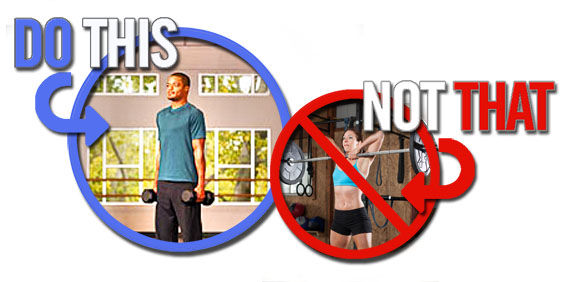
Exercise to Reconsider: Barbell Upright Rows
Why: Frequently considered for clients looking to add size and build strong shoulders and traps, the barbell upright row exercise causes internal rotation of the arms and protraction of the scapula, a combination that can create shoulder impingement by restricting the space around the collarbone, says Cotter.
More Effective Alternatives: To safely and effective target the traps, Cotter recommends having clients perform shrugs using a heavy set of dumbbells or kettlebells for a better way to build strength given that individuals can better handle the heavier loads. For the deltoids, Cotter suggests incorporating a heavy shoulder press into the training mix with either a barbell or kettlebell. He argues that this movement is safer for loading the deltoids because the weight is distributed across the back, lats and triceps, along with the shoulders.
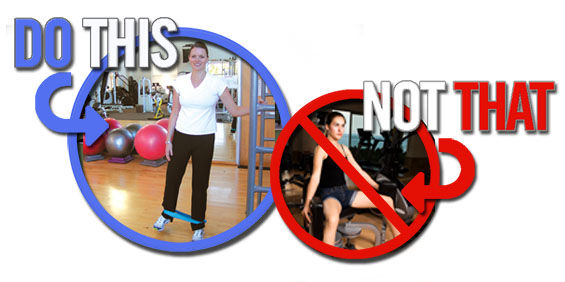
Exercise to Reconsider: Seated Abduction
Why: Even though most fitness professionals know spot reduction is not possible, many clients can still be seen taking a seat on the abductor machine on their quest for thinner thighs. Not only does this exercise not miraculously melt fat, it doesn’t actually work the outer thigh muscles, according to ACE Senior Consultant Chris McGrath, M.S., founder of Movement First in New York City.
“The outer hips—gluteus medius and minimus— are the true abductors. However, in a seated position these muscles are at a disadvantage for creating the abduction motion, forcing the body to use the deep rotators of hip, including the piriformis muscle, to complete the movement,” says McGrath. “The potential issue with overworking the piriformis muscle is that it lies over the sciatic nerve and, when tight or overworked, it may compress and irritate the sciatic nerve, which may cause a bothersome and painful condition for clients.”
More Effective Alternative: It is essential that clients understand two important facts about shaping the body: (1) It is not possible to burn off fat from a specific part of the body by selectively exercising that area alone; and (2) a well-rounded routine of physical activity that includes cardiorespiratory and total-body resistance training is what will help them to truly decrease body-fat percentage. One of the benefits of working the outer hips is to enhance hip stability. McGrath, who is also an ACE Master Trainer, recommends side tube walking, which is performed by placing a light elastic band around the ankles or knees and stepping sideways, keeping the toes pointed forward or turned in slightly. “Hip stability is important for more functional exercises like squats, lunges and other multijoint, large muscle group exercises, which will help clients burn calories and build lean muscle.”

Exercise to Reconsider: Partner Leg Throw
Why: While the days of high school physical education are long behind most of us, somehow the highly questionable exercise commonly referred to as the partner leg throw still lives on in the gym. This exercise, which pits the upper-body pushing power of the trainer against the stopping ability of the client’s abs, is not a fair fight, according to Jonathan Ross, ACE Senior Consultant and Master Trainer. Ultimately, explains Ross, the abs will lose and the more powerful hip flexors will have to kick in.
“Although it’s not necessarily a bad thing to have the abs and the hip flexors work together—as they are designed to do in many situations—this particular exercise invariably results in a rapid, excessive and uncontrolled anterior tilt of the pelvis,” explains Ross, author of Abs Revealed. “The stress placed on the smaller, weaker paraspinal muscles here makes no sense. Instead of picking on crunches, we as fitness professionals should gang up on this horror show of an exercise.”
More Effective Alternative: For a safer and more effective way to train the same muscles targeted by the partner leg throw, Ross recommends having clients try Ross’ balance on shins leg lowering exercise using a stability ball. “The immediate feedback of the ball provides input on how well the movement is performed. If you move too quickly or without proper sequencing, the ball will move around or fall off of the legs. Plus, the slower movement gives you time to notice if the pelvis is held stable or is allowed to roll forward, which is the undesirable and unavoidable consequence of the partner leg throw.”
While each client and training program is unique, Stangel stresses that trainers should always keep in mind that the execution of movement should always remain more important than the performance of any one exercise in particular. “Execution can alter the safety and effectiveness of even the best exercises and cannot be overemphasized.”





 by
by 